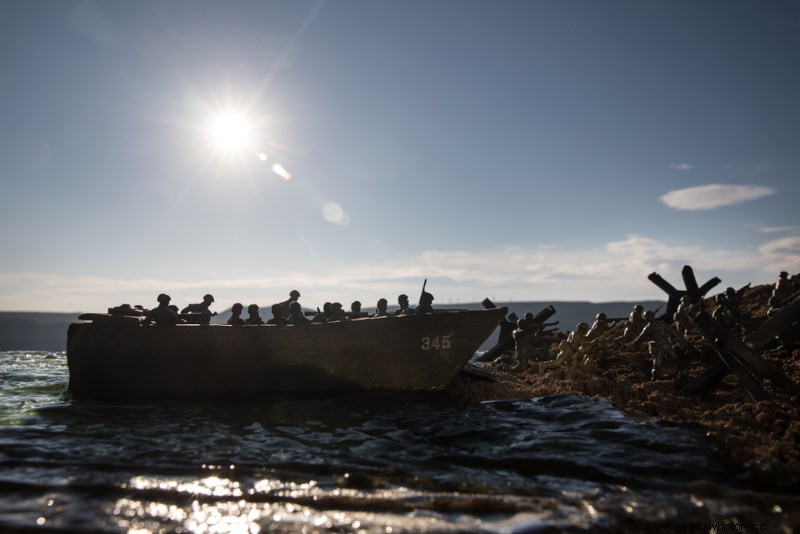The D-Day it's how June 6, 1944 went down in history. On that day, the troops a liads landed in Normandy , northern coast of France, and began the attack against the Nazi Germans who had occupied French territory since 1940. The successful landing in Normandy was decisive for the Allied to win World War II after the Nazi eviction from France.
Also read: Ustasha and the fascist terror in Croatia during WWII
D-Day Background
The Nazis started the Second World War in 1939, shortly after the invasion of Poland . In the early years of the conflict, the Germans annexed territories and imposed successive defeats on Allied troops. The following year, Nazi soldiers were already parading through the streets of Paris, symbolizing the conquest of France. The United Kingdom was practically alone defending itself from the air attacks of Nazi planes and trying ways to react to the Axis advance in Europe.
With the entry of the United States and the Soviet Union into the war , from 1941, the Allies were strengthened and were able to fight back the Nazi-fascist attack carried out in the first years of the world conflict. Germany's defeat at the Battle of Stalingrad , in 1943, was important in driving the Germans away from the East and back to Berlin.
The winter in the eastern Soviet region was relentless with the Nazis. With this setback, Hitler began to lose control over the war, and the Allies decided to charge against the Axis. For that, it was necessary to establish a front in northern Europe .

D-Day Preparation and Strategies
The reaction to the Axis expansion in Europe required the Allies to attack from the extremes of the continent. The attack on southern Italy took a great deal of effort from the soldiers, and a new attack from the north generated distrust. Despite this, Operation Overlord, as D-Day was officially called, took place under pressure from the United States.
The Normandy landings would force the Axis to move their troops to northern France, promoting their attrition. It was of fundamental importance for the Allies to reconquer French territory and impose a defeat on the German army.
D-Day
On June 5, 1944 , divisions of paratroopers jumped in different regions of Normandy, in order to confuse the Germans who were nearby and to conquer some bridges that would facilitate the passage of Allied troops the next day. It is estimated that 5300 ships were used carrying 150,000 men and 1500 tanks to Normandy.
After this previous position was taken, on June 6th, the A liados landed in northern France, near the city of Caen. The German soldiers were defeated mainly because they lacked air support to fight back the Allied landing. Although it was a difficult and intense battle, the Allies did not have many casualties.
Also read: How was WWII in Asia?

D-Day Consequences
With success n the landing on Normandy , troops led by the American general Eisenhower began to reconquer French territory, which was under German rule. Gradually, the German troops were retreating and returning to Germany, thus taking place the Nazi eviction of France .
D-Day raised pressure from the Allies n the side the incidental to push the Nazis to Berlin, while the Soviet front did the same from the East. There is no consensus that June 6, 1944 defined the course of World War II in favor of the Allies, but it is certain that it contributed significantly to the Nazi-fascist defeats in Europe.
